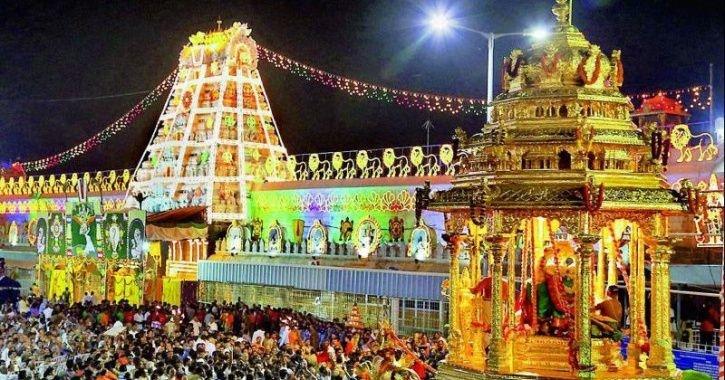Following the nationwide lockdown that been extended twice and put in force for 53 continuous days devotees to Tirumala has come to standstill halt and also their cash offerings along with it .
The problem with Tirumala administration is it has to feed its 8,000 permanent employees, besides the 15,000 outsourced contract staffs at this hill shrine located on the holy Tirumala.
But with zero offerings from devotees the shrine is banking on other sources of income like interest on fixed deposits to cater to their massive employees base
TTD Chairman Y V Subba Reddy said the board has been incurring a loss of Rs 200 crore per month, ever since the temple was closed after the Centre imposed a nationwide lockdown on March 24 in a bid to prevent the spread of COVID-19.
Incidentally, TTD had implemented entry curbs to the temple from March 20 itself as a precaution, he said.
[splco_quote]”Despite severe financial constraints, TTD would be in a position to manage (full) salary payments to all its permanent staff and outsourced workers, and pensioners for the next two or three months,” Reddy told .[/splco_quote]
The TTD Board is expected to meet its requirements from alternative sources of income like fixed desposits, which yield a whopping Rs 700 crore annual interest, a temple official said.
It has Rs 12,000 crore in FDs in various nationalised banks which ensure the said returns.
He added the board had in February approved budget proposals envisaging a total revenue of about Rs 3,310 crore during the fiscal year and of this cash offerings made by devotees were projected to be Rs 1,351 crore.
About 2.5 crore devotees throng the temple annually, the official added. Even with no devotees all rituals are being conducted uninterruptedly and flawlessly by the priests, Reddy said .
[splco_spacer size=”30″]

[splco_spacer size=”30″]
Besides being involved in many charitable activities, TTD has several educational institutions and health care facilities under its control to serve the needy public and these aspects are also being taken care of, Reddy added.
Historians say Tirumala (Upper Tirupati) was an established centre of Vaishnavism around the 5th century A.D.
Much prior coining of the word Hindu , The city became great Vaishnava centre during the time of Ramanujacharya in 11th Century, and the temple town for most of the medieval era until the 17th century and its rulers contributed considerable resources and wealth notable by Krishna Deva Raya and Achyuta Deva Raya, Sadasiva Raya and Tirumala Deva Raya.
The city has many historical temples including Tirumala Venkateswara Temple which bears 1150 inscriptions in Tamil, Telugu and Kannada languages.
Out of 1150 inscriptions highest is in Tamil in particular 236 belong to Pallava, Chola and Pandya dynasties, 169 belonged to Saluva dynasty, 251 belonged to Achyuta Deva Raya period, 130 belonged to Sadasiva Raya period and another 135 originated in Aravidu dynasty.
The contributions of the Tamil speaking Pallava Kingdom around the 9th century AD, Chola Kingdom around the 10th century AD and then Dravida Telugu language speaking Vijayanagara Empire in the 14th century AD made this as historic prominent Vaishnava temple .









